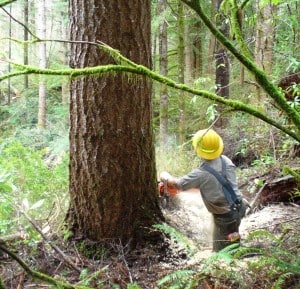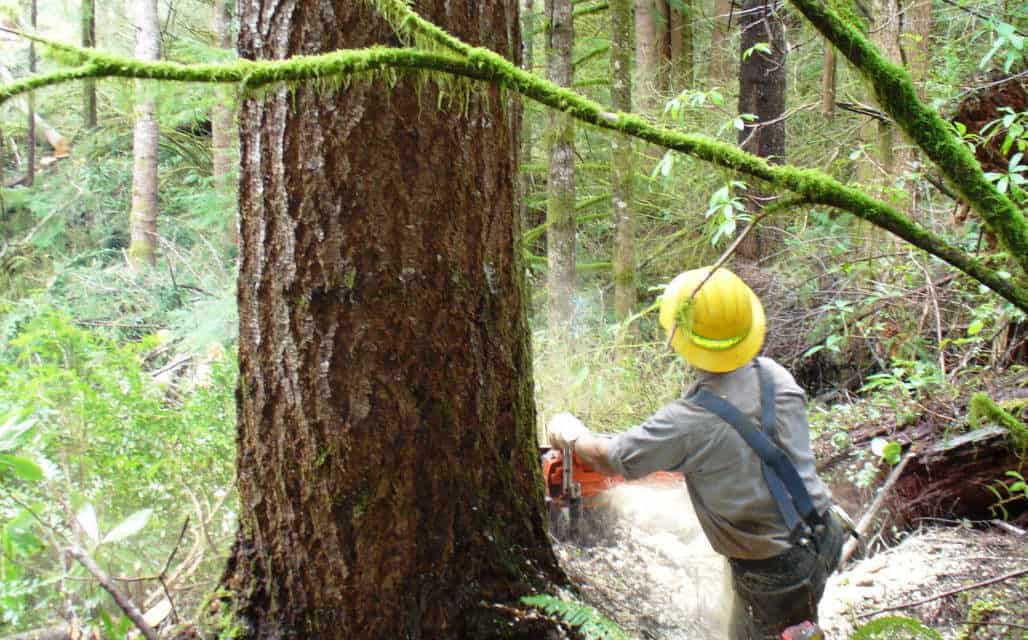Cutting Firewood Safely
By Melissa Wynn
[media-credit name=”bigstockphoto” align=”alignleft” width=”300″] [/media-credit]One of the best parts of living in the woods is a crackling fire in the fireplace, reminding us all that it’s that time of year to fill the wood shed once again. Gathering firewood can be a great way to spend a family weekend as long as everyone is aware of the dangers.
[/media-credit]One of the best parts of living in the woods is a crackling fire in the fireplace, reminding us all that it’s that time of year to fill the wood shed once again. Gathering firewood can be a great way to spend a family weekend as long as everyone is aware of the dangers.
Running a chainsaw is serious business and safety precautions like heavy eye protection, sturdy gloves, ear plugs and a durable hard hat are a must. Accidents happen, so it is always a good idea to have at least one buddy along when felling trees and bucking up logs in the woods. A helping hand is also a plus when it is time to load the heavier rounds into the truck.
Tree felling requires skill, technique and practice. Always consult an experienced faller and go along for the ride a few times to watch and learn before ever trying to fall a tree. Please consider these common dangers of tree felling listed by OSHA:
Throwback. As a tree falls through other trees and lands, branches and other objects may get thrown back toward the logger. To prevent this, avoid felling trees onto other trees or objects. Do not turn your back on the tree as it falls, look up as you escape along the retreat path.
Terrain. Hazardous conditions can be created when a tree is felled onto stumps, rocks or uneven ground. If possible, move obstacles in the way of the falling tree or change the felling direction.
Lodged Tree. Trees do not always fall all the way to the ground, and instead must be pushed or pulled down by a machine.
Widow Maker. This refers to broken limbs hanging freely in the tree to be felled or in other trees nearby. Knock down all of these branches or pull them down before beginning work. Never work underneath them.
Snag. This term refers to a standing dead, rotting or broken tree positioned near the tree to be felled. Use a machine to bring these trees down before beginning work. It must be felled or avoided by at least two tree lengths.
Spring Pole. This is a tree, limb or sapling that is under tension due to the weight of another tree or object. Use a machine or chain saw to release the tension before beginning work in the area.
Know the dangers and cut safely! Wood cutting permits are required and available at your local forestry office.
OSHA tips courtesy of www.nsc.org












